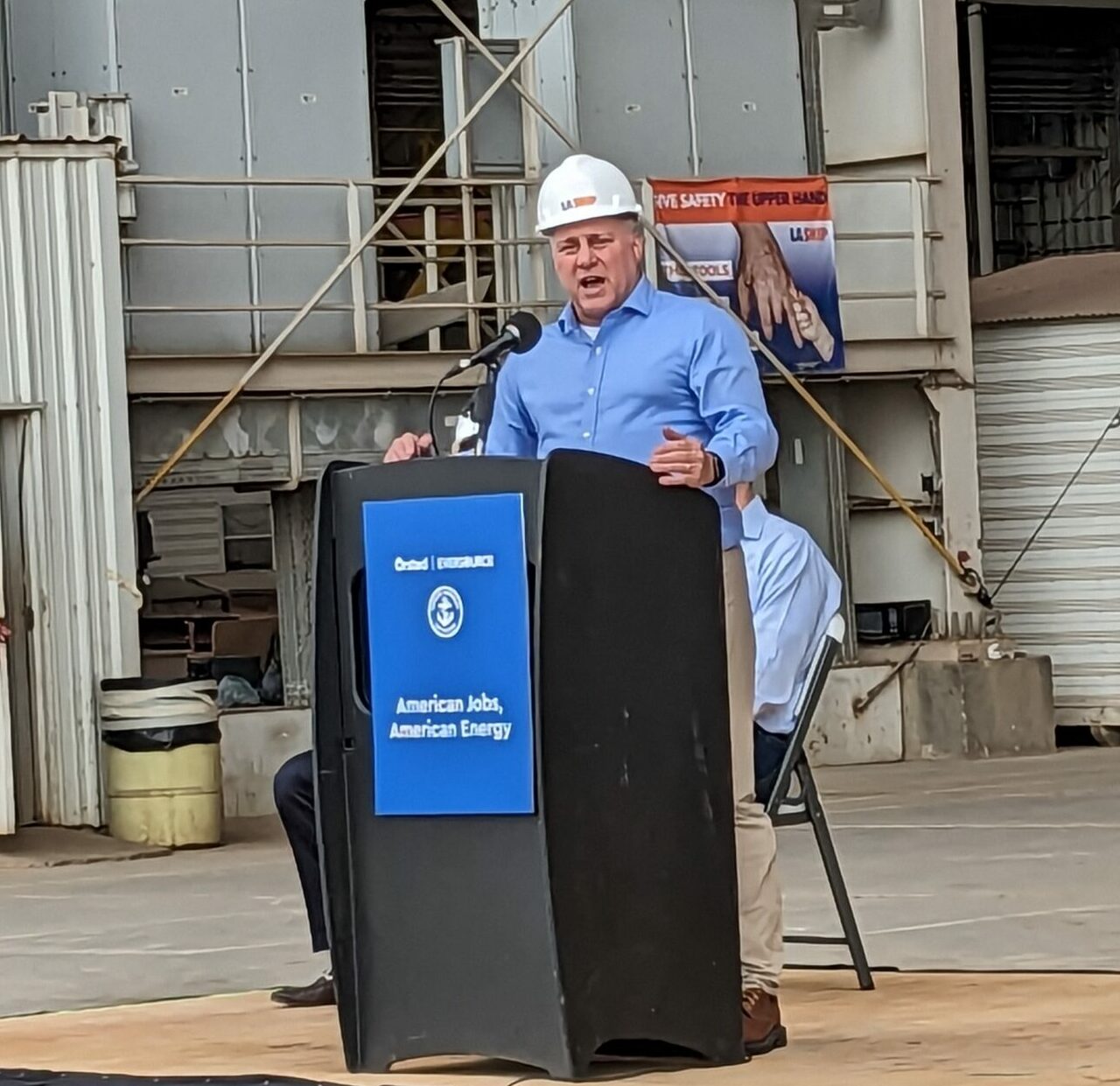In Louisiana’s Oil Rig Country, a Mobile Wind Farm Giant Emerges

“We’re going to need a lot more American ships, so I hope everyone’s ready to keep working.”
That was the message this week from David Hardy, group executive vice president at Danish energy company Ørsted, whose company has commissioned the construction of a massive water vessel that can act as a high technology support vessel for regional wind farms wind farm.
Ørsted, along with Boston-based energy provider Eversource, have tapped Louisiana-based Edison Chouest to build the ultra-modern ship to help ferry renewable wind power into critical Northeast markets. The corporations say the craft will lead the U.S. into a new era of clean energy production.
Company leaders gathered at the Chouest shipyard in Terrebonne Parish on Tuesday to offer a glimpse at the Eco Edison, the first such wind-farming vessel purpose-built in the United States.
Its construction is taking place in an area of the world well-known for its high levels of oil drilling and rig activity. The federal government states that around 3,200 oil and gas structures of varying sizes “remain active” in the Gulf of Mexico.
Upon its construction, the 260-foot-long ship will have taken about 500,000 man-hours to produce. It is expected to sail to its home base in Port Jefferson, New York, in 2024.
On Tuesday Hardy touted what he said were the promising benefits to vessels like the Eco Edison, claiming that the growing reliance on renewable energies like wind allows the U.S. “greater energy independence from adversarial countries like China and Russia.”
“Wind energy is an increasingly important part of America’s overall energy mix, and we’re proud to be building, new energy projects that will power, millions of US homes and businesses,” he said.
The ship will be crewed by around five dozen workers drawn from the northeast region to which it will be providing power. The onboard technicians, who the company says will work a two weeks on/two weeks off schedule, will have access to on-ship entertainment and recreation facilities including a gym and a movie theater.
The ship will essentially function as an at-sea headquarters and base of operations for the works servicing and maintaining around 200 wind turbines off the New England coast.
“This shipyard and this vessel are living proof that the American offshore wind industry is creating jobs today,” Hardy said at the event.
Renewable energy at present comprises just over one-fifth of all electricity generation sources in the United States, according to data from the Department of Energy. Fossil fuels—overwhelmingly coal and natural gas—make up 60 percent of the U.S. energy profile.
Wind, meanwhile, represents nearly half of the total U.S. renewable electricity capture, with 10.2 percent of renewable energy coming from wind farms. Hydroelectric comes in second at 6.2 percent.
House Majority Leader and Louisiana Rep. Steve Scalise said at the event that regarding the U.S. energy profile, “it’s not a question of which source of energy we need.”
“The world is going to need more energy, and we’re going to need all forms of energy,” he said, arguing that the U.S. has “been at the front end of innovations” including those in renewable energy sources.
Beyond its role in next-gen energy technology, Ørsted has touted the numerous technological advantages the ship possesses to carry out its duties, including a “motion-compensated gangway” that will permit crews easy and safe access to wind turbines. A “daughter” ship will also be onboard to ensure easy ferrying of crews from the vessel to work locations.
Mike Ausere, a development vice president with Eversource, said at Tuesday’s event that the Eco Edison was just “one of the many ships needed for offshore wind.” He argued the project “represents the beginning of a renewed era of American global economic leadership.”
Hardy, meanwhile, optimistically predicted the ongoing creation of renewable energy jobs for many years down the road.
“We’re putting people to work today, and we’ll put the next generation of workers to work as well,” he said.
Please follow DVJournal on social media: Twitter@DVJournal or Facebook.com/DelawareValleyJournal


